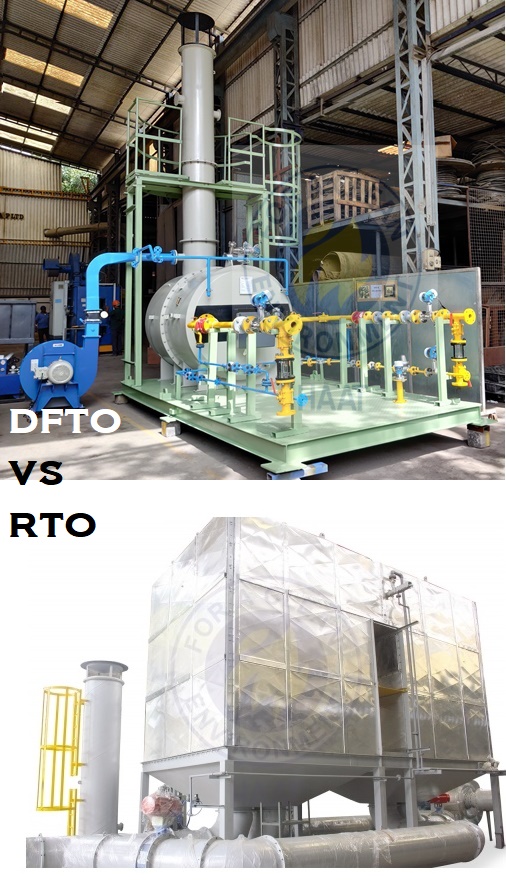
Direct Fired Thermal Oxidisers Vs Regenerative Thermal Oxidisers - DFTO Vs RTO
Industrial users are in a quandary, more often than not, as to which of these two pieces of equipment will do their job. We give below a comparison between the two to facilitate selection:
1. DFTO is relatively simpler in process, whereas RTO is a little more complex.
2. Initial investment is comparatively less in DFTO and more in RTO.
3. RTO is practically self-sustaining, whereas DFTO involves higher running costs.
4. RTO is of a vertical design, whereas DFTO can be made either vertical or horizontal.
5. Depending on the VOC content of the dirty gas, an ignitor is enough for the RTO, whereas a burner (usually modulating) is required for the DFTO.
6. RTO can be made as a 2 bed or a 3 bed/chamber system, while DFTO has only one chamber.
7. A reasonably tall stack can be mounted on top of a vertical DFTO, while it has to be mounted independently for an RTO.
8. Both can be designed to handle fairly large flow of dirty gas.
9. RTO is chosen where the LEL values are low, whereas DFTO is preferred when there is substantially high VOC content and when 99% hydrocarbon removal efficiency is required.
10. Both can be designed to operate in a fully `auto` mode.
11. The residence time and internal design will decide the efficiency of the systems as well as emissions.
12. DFTO can be supplied skid-mounted up to certain sizes, whereas an RTO needs assembling at site.
Haat supplied quite a number of DFTOs and RTOs within the country and abroad and an intending buyer can rely on Haat`s experience and expertise. Please visit OXR (Haat’s DFTO) and HXR (Haat’s RTO).


